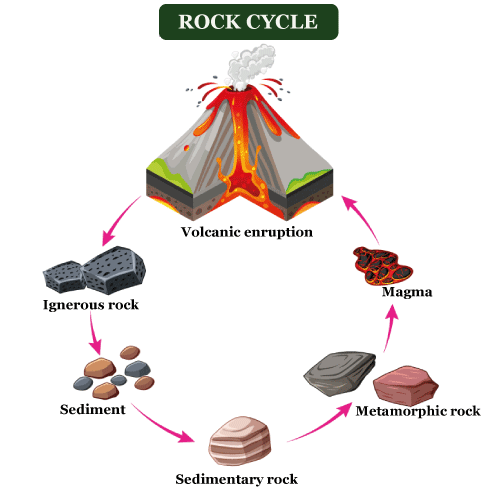Lithosphere DefinitionThe outermost rocky layer of Earth is known as the lithosphere. It consists of the Earth's brittle crust and upper mantle, and its location makes this layer the coolest part of Earth's surface. Additionally, the part is highly rigid. 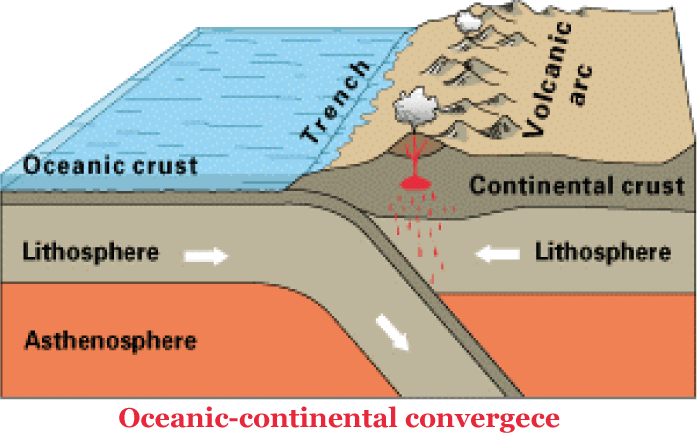
Lithosphere DefinitionThe name "lithosphere" is a combination of the Greek words litho, which means "stone," and "sphere," which refers to the Earth's rough shape. The Earth is therefore enclosed by a sphere made of rocks and minerals Some scientists refer to the Earth in terms of other spheres. Some of them are as follows: 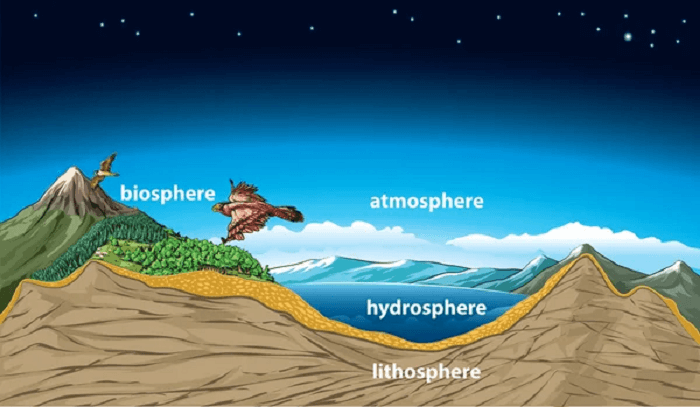
The lithosphere, which interacts with every other sphere, is a significant component of the environment. The lithosphere supplies minerals dissolved in water or soil through hydrosphere-lithosphere interactions with the biosphere. The hydrosphere and the atmosphere contribute to weathering and erosion, turning rocks into soil and making minerals available to the biosphere. Because of its landforms, the lithosphere also affects the weather and also how water moves. Certain scientists investigate these connections. Earth's StructureThe crust, mantle, outer core, and inner core are the four layers of the Earth. The top layer of Earth is called the crust, and it is made of solid rock that ranges in thickness (between 5 and 70 kilometers). Although it may seem enormous, it is quite narrow geologically. 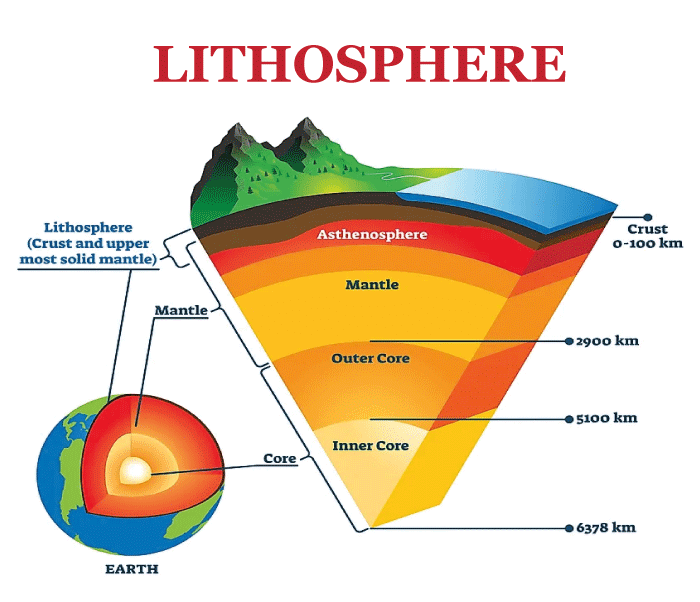
The mantle is about 3000 kilometers deep and sits underneath the crust, made of warm, almost molten rock. The outer core, the only liquid layer of Earth, is located below the mantle, and it produces the planet's magnetic field and comprises iron and nickel. The inner core of the Earth, which is located deep within, is primarily formed of iron. The immense pressure keeps the inner core from turning into a liquid despite the temperature being 5200°C, which is much above the melting point of iron. Where is the Lithosphere?The entire crust and upper mantle comprise the lithosphere (the Earth's outermost layer). Since it is the outermost layer, the atmosphere, hydrosphere, and biosphere are the lithosphere's outer boundaries. The asthenosphere, a mantle layer that resembles plastic over which the lithosphere "floats," forms the lithosphere's inner boundary. 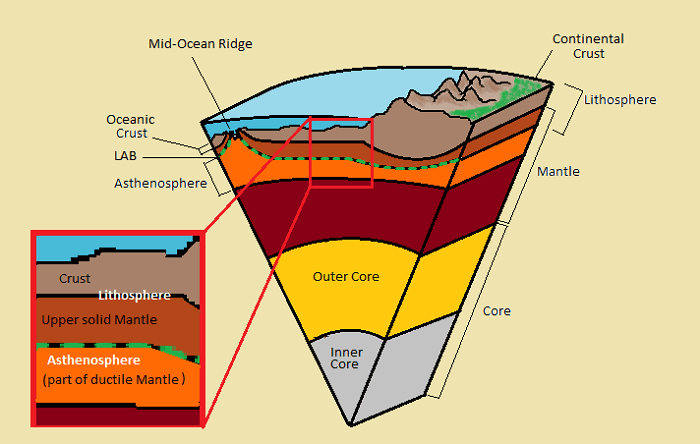
The thickness of the lithosphere might differ from one location to another. This is true because the lithosphere has very thick (like those parts that make up mountains) and very thin sections (such as the section beneath the ocean). Moreover, older portions of the crust are thicker than younger portions. The thickness of the lithosphere is typically estimated by geologists (those who study the Earth) to be 62 miles (100 km). Composition of LithosphereThe lithosphere has different compositions depending on whether the Earth is on land or under an ocean. The Earth's crust is not a homogeneous material because it is composed of numerous layers of rocks. The Earth's crust comprises basaltic rocks at the bottom, metamorphic rocks in the middle, and sedimentary rocks at the top. Moreover, several sizable dynamic tectonic plates make up the Earth's crust. These tectonic plates continue to move steadily and slowly, average at 10 cm. Types of LithosphereOceanic and continental lithosphere are the two primary categories of the lithosphere: 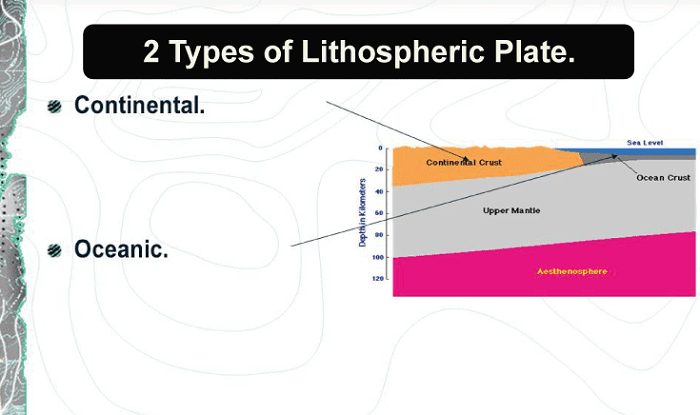
Oceanic LithosphereThe term "oceanic lithosphere" refers to the lithosphere connected to the oceanic crust and found in ocean basins, and it is the area of the crust and upper mantle found under the seas and oceans. In general, the oceanic lithosphere is denser than the continental lithosphere. With time and distance from the mid-ocean ridge, it thickens. Due to the ongoing production of new oceanic lithosphere along mid-ocean ridges, the oceanic lithosphere is considerably younger than the continental lithosphere. Over 170 million years have passed since the earliest oceanic lithosphere formed. Continental LithosphereThe continental crust is connected to the continental lithosphere, and it ranges in thickness on average from 35 to 45 km and directly interacts with the atmosphere. A sedimentary and igneous rock layer forms the continents, and Granitic rock makes up most of this layer. The continental lithosphere is substantially older than the oceanic lithosphere, dating back billions of years. Although the continental lithosphere only covers around 40% of the Earth's surface, it accounts for about 70% of the crust's volume. Most scientists hold no evidence of a continental crust at the beginning of Earth's history; rather, they think that the continents gradually developed from the partial differentiation of oceanic crust. Importance of Lithosphere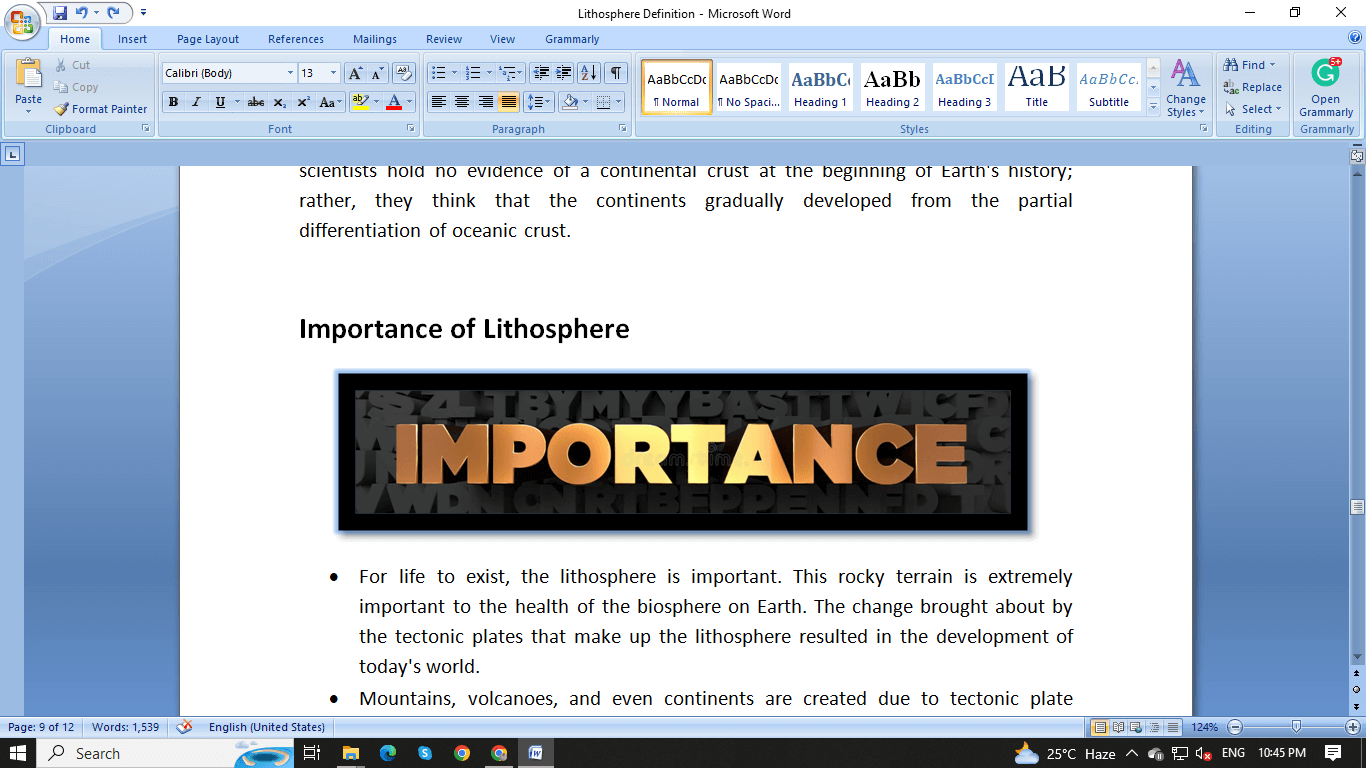
How are these Plates Moving?A tectonic shift is a term used to describe the motion of the tectonic plates, and it is also referred to as plate motion sometimes. The tectonic plates move apart or together due to the enormous heat of the radioactive reactions within the Earth's inner surface. 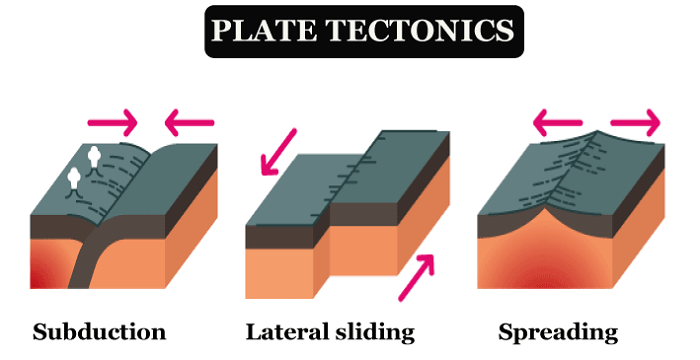
Tectonic PlatesTectonic plates are the most well-known characteristic of the Earth's lithosphere. Tectonic plates describe the interaction of the enormous lithosphere slabs known as tectonic plates. The North American, Caribbean, South American, Scotia, Antarctic, Eurasian, Arabian, African, Indian, Philippine, Australian, Pacific, Juan de Fuca, Cocos, and Nazca tectonic platesare among those that make up the lithosphere. 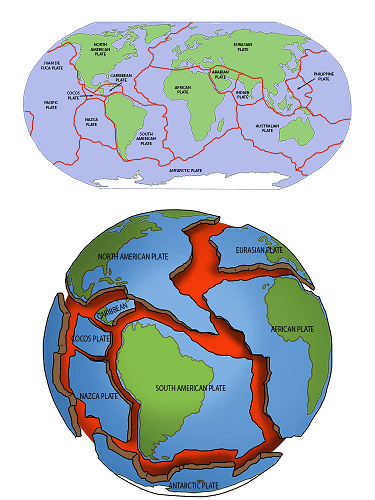
Most tectonic plates occur where these plates meet, where they may crash, split apart, or where they may slide against one another. Thermal energy (heat) from the lithosphere's mantle component enables the tectonic plates to move, and the lithosphere's rocks become more elastic due to thermal energy. Some of Earth's most dramatic geologic occurrences result from tectonic plates: deep ocean trenches, volcanoes, orogeny (mountain-building), earthquakes, and volcanoes. The lithosphere may change due to tectonic plates: At ocean ridges and rift valleys, where tectonic plates are separating, the continental and oceanic lithospheres are at their thinnest. Lithosphere and Other Spheres InteractionsThe lithosphere, which is cold and brittle, is one of five significant "spheres" that affect Earth's environment. Other spheres are the cryosphere (Earth's frozen regions, with both ice and frozen soil), the hydrosphere (Earth's liquid water), the atmosphere (the air surrounding our planet), and the biosphere (which includes all life on the planet). Interactions between these spheres have an impact on a variety of factors, including geography, biodiversity, and ocean salinity. For example, the pedosphere, formed of dirt and soil, is a lithosphere component. The lithosphere, cryosphere, hydrosphere, atmosphere , and biosphere interact to form the pedosphere. The tremendous movement of a glacier (cryosphere) can reduce enormous, hard boulders of the lithosphere to powder. 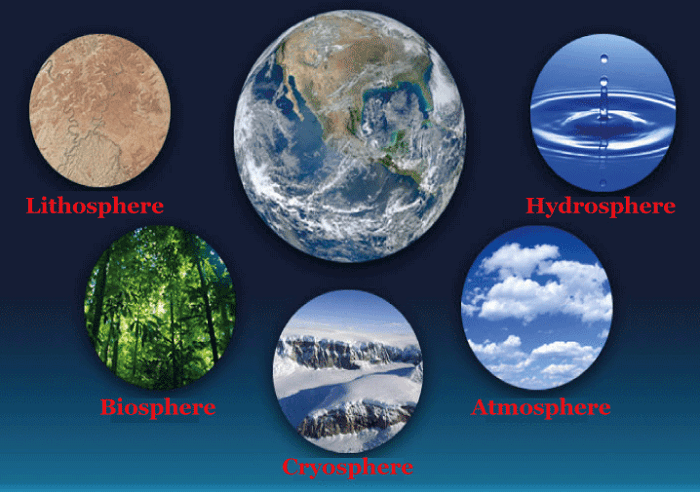
Rocks in the lithosphere may deteriorate due to weathering and erosion brought on by wind (atmosphere) or rain (hydrosphere). These eroded rocks combine with the organic elements of the biosphere, such as animal and plant remains, to form fertile soil or the pedosphere. Interactions between the lithosphere, hydrosphere, and cryosphere also influence temperature variations on Earth. For example, temperatures on tall mountains are frequently much lower than in plains or slopes. The interaction of the lithosphere's mountain range with the atmosphere's decreased air pressure and the hydrosphere's snowy precipitation produces a chilly or even freezing climate zone. The climate zone of a location also affects the adaptations needed by the biosphere's creatures. Things to Remember
Next TopicMalaria Definition
|
 For Videos Join Our Youtube Channel: Join Now
For Videos Join Our Youtube Channel: Join Now
Feedback
- Send your Feedback to [email protected]
Help Others, Please Share




